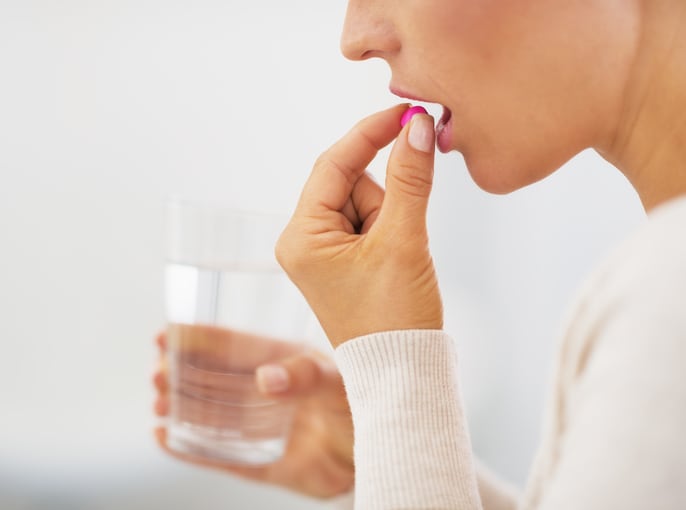T2D is characterised by progressive insulin resistance, which is initially compensated by enhanced insulin secretion, but defects may be mitigated with vitamin D intake (associated with reduced T2D risk).
However, where impaired fasting glucose (IFG) is already present, the effect of supplementation may not be strong enough to reverse the damage to glucose metabolism, the authors of a new study in 'Nutrients' say.
“Stratified analysis showed that the effect of low serum 25(OH)D on T2D risk was significant in individuals with baseline FPG lower than 5.6 mmol/L, but not among those with FPG higher than 5.6 mmol/L at baseline,” the report states.
Study protocol
Scientists recruited 1,926 adult Chinese subjects to examine the effect of vitamin D on T2D incidence.
Subjects completed questionnaires at baseline to establish demographics, socio-economic status, health parameters, physical fitness, and history of diabetes. There was high prevalence of vitamin D deficiency and high risk of T2D in the study cohort.
They were instructed to continue taking regular medication, except aspirin or non-steroidal anti-inflammatories 48 hours before each visit for data collection.
Blood samples were obtained (following an eight hour overnight fast) for biochemical analysis. Serum 25(OH)D was analysed as a continuous variable or categorical variable and categorised using median thresholds of vitamin D deficiency and insufficiency, quartiles, and quintiles, in relation to three models: serum 25(OH)D as the independent variable (model 1); serum 25(OH)D with age, gender, and BMI variables (model 2), and serum 25(OH)D with all remaining socio-demographic parameters (model 3).
Dose-response or non-linear relationship between serum concentrations and T2D risk were examined using a restricted cubic spline model with three vitamin D concentrations (10, 20 and 35 ng/ml). The primary endpoint was T2D incidence at 36 months.
Increased risk for men
Resulting data revealed subjects with vitamin D deficiency and insufficiency in models 1 and 2 had a higher risk of developing T2D, compared to those with sufficient serum levels, while there was no associated risk among subjects with high concentrations (above serum 25(OH)D).
The hazard ratio (HR) for T2D decreased rapidly with serum vitamin D between 28.5 and 40 ng/ml, and flattened out when concentrations exceeded 40 ng/ml. The optimal serum 25(OH)D for maximum risk prevention was approximately 28.5 and 40 ng/ml.
A dose-response relationship was detected among subjects with fasting plasma glucose (FPG) below 5.6mmol/L and T2D risk.
Researchers also note a significant association between low serum 25(OH)D and increased risk of T2D limited to men. Excess weight or obesity presented a further significant risk factor.
“Our results suggested a potential additive interaction between vitamin D deficiency/insufficiency and overweight/obesity on T2D risk. And about 55.5% of the HR of being T2D was attributable to the interaction between these two factors,” the authors write.
“As more than half of the Chinese adult population is overweight/obesity and vitamin D deficiency/insufficiency is highly prevalent among persons with obesity, our finding might have an important impact on public health.”
Joint effect
The joint effect of vitamin D insufficiency and physical activity on T2D risk was greater than expected, as compared with the effects of the individual risk factor alone - and was attributed to reduced solar ultraviolet exposure.
The authors state: “This finding may have large public health significance because the burden of T2D among persons with insufficient physical activity may be decreased by making improvements in serum 25(OH)D concentrations.”
Targeting lifestyle changes to encourage outdoor physical activity would help offset both factors and may be the first course of action, the authors maintain.
“The improvement in the prediction of T2D, above conventional risk factors, demonstrated the potential of serum 25(OH)D as a biomarker for T2D risk,” adds the team.
Of the study population, 114 subjects developed incident T2D during the 36 months of follow-up. Meanwhile, the addition of low serum 25(OH)D significantly improved the net reclassification index (NR() for T2D by 0.205 in the total population.
Overall, the association between serum 25(OH)D and T2D incidence was non-significant due to the small sample side, short follow-up, and high prevalence of vitamin D deficiency/insufficiency (77.21%), the authors say.
Source: Nutrition
Published online, December 29, 2022: http://doi.org/10.3389/fnut.20222.1077734
‘The modification of individual factors on association between serum 25(OH)D and incident type 2 diabetes: Results from a prospective cohort study’
Authors: Zhiyong Hu, Xueyuan Zhi, Yiming Ma, Jiafu Li, Jinxiu Wang, Jianliang Zhu, Bingyan Li and Zengli Zhang

